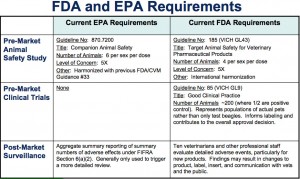 It’s important to understand how FDA recalls work. These voluntary recalls are not exactly voluntary, which isn’t at all clear to most people. There are two problems, first the recalls are called voluntary because the FDA has no power to demand a recall. The FDA doesn’t actually require recalls, they request them. If a company refuses, the FDA can seize product and shut down operations.* So, technically all recalls are voluntary. However, because of liability issues, companies pretty much have to conduct a recall or face litigation and a court ordered recall. So not so voluntary.**
It’s important to understand how FDA recalls work. These voluntary recalls are not exactly voluntary, which isn’t at all clear to most people. There are two problems, first the recalls are called voluntary because the FDA has no power to demand a recall. The FDA doesn’t actually require recalls, they request them. If a company refuses, the FDA can seize product and shut down operations.* So, technically all recalls are voluntary. However, because of liability issues, companies pretty much have to conduct a recall or face litigation and a court ordered recall. So not so voluntary.**
And this is important because secondly, the term ‘voluntary’ implies the danger of the product may not be all that great, that the company had a choice about the recall, that the company is recalling the product out of the goodness of their heart.
For more information, here is are:
- FDA’s enforcement policy for recalls
- discussion of FDA recall policy from Regulatory Affairs Assoc. a consulting firm specializing in FDA approval of products
- discussion of FDA recall policy from FindLaw an online legal information source for law firms.
*[“The FDA can order a recall only under unusual circumstances. These include, but are not limited to, infant formula recalls, medical tissue product recalls (such as skin graft cultures) and medical device recalls where there’s a significant risk to a patient if the device is not used in its mandated and recommended way.”]
**(The exception is if the company initiates the recall first and informs the FDA, which tends to happen when the company conducts their own internal testing. This sort of recall IS voluntary in the true sense of the word.)



